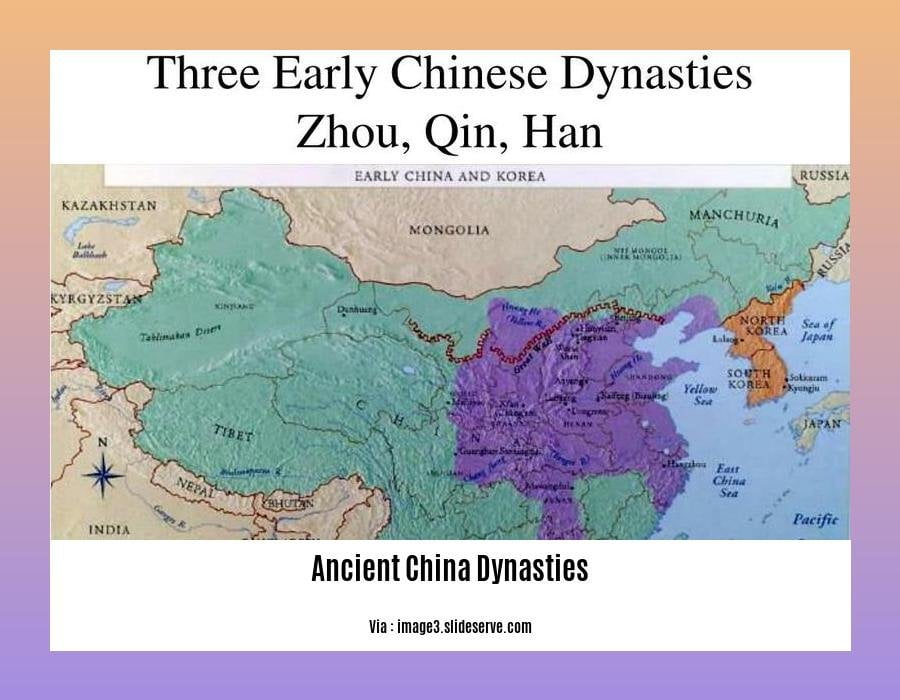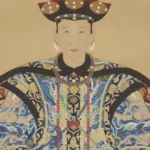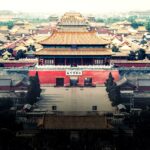Embark on a captivating exploration of ancient China’s imperial dynasties in “Delving into the Ancient China Dynasties: A Historian’s Insights.” This article delves into the rich historical tapestry of China, unraveling the intricate political, social, economic, and cultural dynamics that shaped these enigmatic empires. Join us as we journey through time, uncovering the secrets and splendors of ancient China’s dynastic legacy.
Key Takeaways:
- The Xia Dynasty, the first dynasty of China, invented writing around 2070-1600 BC.
- The Shang Dynasty developed bronze, chariots, and writing.
- The Zhou Dynasty introduced the Mandate of Heaven and was the longest dynasty in ancient China.
- The Qin Dynasty unified China and built the Great Wall.
- The Han Dynasty brought a period of peace and prosperity and lasted from 206 BCE to 220 AD.
- The Tang Dynasty is considered a “Golden Age” of Chinese civilization and flourished in arts, literature, and science.
- The Song Dynasty invented gunpowder and the compass.
- The Yuan Dynasty was the first foreign dynasty to rule China and was established by the Mongols.
- The Ming Dynasty expanded the Great Wall and flourished in exploration and maritime trade.
- The Qing Dynasty, the last imperial dynasty of China, ruled by the Manchus until 1911.
Ancient China Dynasties
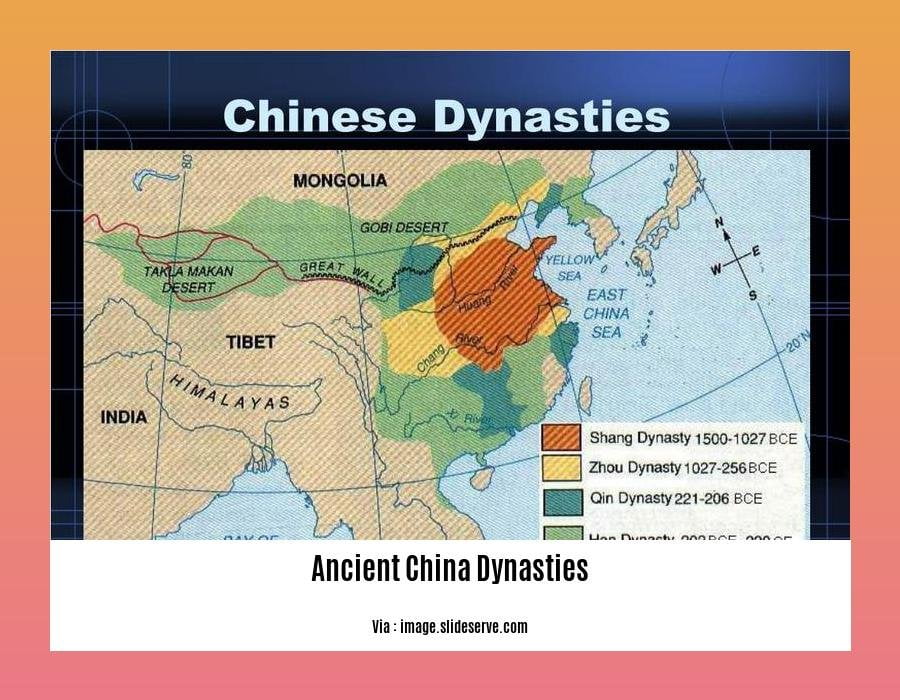
Throughout Chinese history, ancient China dynasties have played a pivotal role in shaping the nation’s landscape. Each dynasty contributed to the country’s cultural, political, and economic development, leaving a lasting impact on Chinese civilization.
Xia Dynasty (c. 2070-1600 BC): The legendary first dynasty, whose existence is debated but remains a significant part of Chinese mythology.
Shang Dynasty (c. 1600-1050 BC): The first dynasty with written records, known for its advanced bronzeware production and oracle bone inscriptions.
Zhou Dynasty (c. 1046-256 BC): The longest-lasting dynasty, fostering the development of Confucianism and Chinese philosophy.
Qin Dynasty (221-206 BC): The first unified empire of China, standardizing weights, measures, and currency under Qin Shi Huang.
Han Dynasty (206 BCE-220 AD): A golden age marked by advancements in technology, the arts, and the expansion of the Silk Road.
Three Kingdoms Period (220-589 AD): A time of political division and warfare, leading to the establishment of the Jin Dynasty.
Sui Dynasty (581-618): A short-lived dynasty that unified China after centuries of division, paving the way for the Tang Dynasty.
Tang Dynasty (618-906): Another golden age, renowned for its flourishing culture, poetry, and technological innovations.
Song Dynasty (960-1279 AD): A period of economic prosperity and artistic achievement, marked by advances in printing and gunpowder.
Yuan Dynasty (1279-1368 AD): The first non-Han dynasty, ruled by the Mongols, who promoted trade and introduced new technologies to China.
Ming Dynasty (1368-1644 AD): A revival of Chinese power, known for its monumental architecture and maritime exploration.
Qing Dynasty (1644-1912 AD): The last imperial dynasty of China, bringing together Manchu and Han influence, and presiding over a period of both prosperity and decline.
These ancient China dynasties showcased the ingenuity, resilience, and cultural achievements of the Chinese people, shaping the course of history and leaving a enduring legacy that continues to inspire today.
Prepare yourself to be mesmerized as you journey through the history of ancient China, a civilization that has left an enduring legacy on the world stage. Explore the origins of this remarkable civilization, from its humble beginnings to its rise as a global powerhouse.
Unravel the enigmatic threads of Chinese civilization history, a tapestry of cultural achievements that spans thousands of years. Discover the dynasties that shaped China’s destiny, from the Xia to the Qing, and witness the remarkable advancements in art, literature, philosophy, and science that flourished during their reigns.
Delve into the history of Chinese inventions, a treasure trove of groundbreaking innovations that have transformed human civilization. From the compass to gunpowder, papermaking to printing, these inventions have played a pivotal role in shaping our world.
Han Dynasty: Golden Age of Chinese Civilization
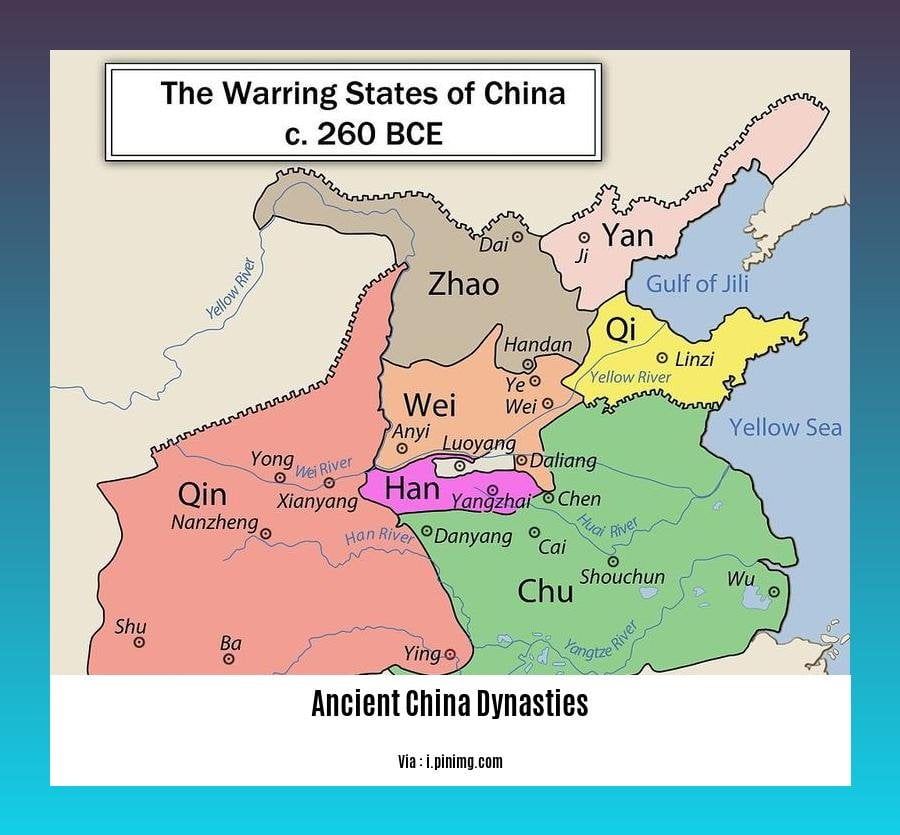
China’s Han Dynasty, from 206 BCE-220 CE, was a beacon of civilization, propelling China to unprecedented heights in technology, art, and culture.
Founded by Liu Bang after the fall of the Qin, the Han ruled for over 400 years, leaving an indelible mark on Chinese history. Under the Han, China expanded its borders, extending its influence across Central Asia and establishing the Silk Road, a vital торговый путь, that connected East and West.
Key Takeaways:
- The Han Dynasty is considered a golden age of Chinese civilization for its achievements and advancements in various fields.
- The development of a civil service system and centralized government contributed to the stability and prosperity of the empire.
- The expansion of the Silk Road facilitated trade, cultural exchange, and the spread of Chinese innovations to the West.
- Emperors like Gaozu and Empress Lu Zhi played a significant role in shaping the dynasty’s legacy.
- Despite its eventual decline, the Han Dynasty’s influence continues to resonate in modern-day China and beyond.
Citation: History.com: Han Dynasty
Cultural and Technological Advancements during Tang and Song Dynasties
The Tang and Song dynasties were golden ages in Chinese history, marked by tremendous progress in culture and technology. Prepare to dive into an enthralling exploration of these advancements.
Technological Milestones
- Woodblock Printing (Tang Dynasty): Imagine accessible knowledge! This technique revolutionized literacy, spreading ideas like wildfire.
- Movable Type Printing (Song Dynasty): Printing got even better, boosting literacy and knowledge sharing to new heights.
- Gunpowder (Song Dynasty): Initially used for fireworks, gunpowder later transformed warfare with its explosive force in weapons.
- Compass (Song Dynasty): Getting lost became a thing of the past as the compass guided travelers and explorers alike.
Cultural Flourishing
The Tang Dynasty witnessed a surge in artistic expression through poetry and painting. The Song Dynasty, known for its economic prosperity, fostered advancements in literature, art, and architecture.
Imperial Patronage
Emperors played a significant role in fostering innovation. They supported research, patronized scholars, and created an environment conducive to scientific and technological advancements.
Impact on Culture and Warfare
The invention of gunpowder had a profound impact on warfare, transforming battle tactics and strategies. Printing technology, despite challenges, significantly boosted literacy and knowledge access, shaping Chinese society and culture.
Key Takeaways:
- The Tang and Song dynasties were periods of remarkable cultural and technological advancements.
- Woodblock printing revolutionized knowledge dissemination, while movable type printing further enhanced literacy.
- Gunpowder transformed warfare with its explosive capabilities.
- The compass aided navigation and exploration.
- Emperors played a crucial role in supporting innovation and advancements.
- The invention of gunpowder and the development of printing technology had a profound impact on warfare and culture.
Citation:
Mongol Rule and Qing Dynasty: Influence and Decline
Key Takeaways:
- The Yuan Dynasty, established by the Mongols, ruled China from 1271 to 1368.
- Mongol rule had a significant impact on China, including the introduction of new technologies and administrative systems.
- The Qing Dynasty, the last imperial dynasty of China, was a period of both prosperity and decline.
- The Qing Dynasty collapsed in 1912, marking the end of imperial rule in China.
Mongol Rule (Yuan Dynasty)
- The Mongol conquest of China led to the establishment of the Yuan Dynasty.
- The Mongols implemented a number of new policies, including a new tax system and the use of paper money.
- Mongol rule also saw the introduction of new technologies, such as gunpowder and firearms.
- However, Mongol rule was also characterized by authoritarianism and imperial absolutism.
Qing Dynasty
- The Qing Dynasty was founded by the Manchus in 1644.
- The Qing Dynasty presided over a period of both prosperity and decline.
- During the early Qing period, China experienced economic growth and territorial expansion.
- However, the later Qing period was marked by internal rebellions and foreign invasions.
- The Qing Dynasty collapsed in 1912, marking the end of imperial rule in China.
Citation:
- Britannica: History of China – The Yuan, or Mongol, dynasty:
FAQ
Q1: What was the most influential dynasty in ancient Chinese history?
A1: The Han Dynasty (206 BCE-220 AD) is considered to be the most influential dynasty in ancient China, due to its long period of peace and prosperity, advancements in civil service and government systems, expansion of trade, and achievements in art, literature, and science.
Q2: Which dynasty ruled China for the longest period?
A2: The Zhou Dynasty (c. 1046-256 BC) was the longest dynasty in ancient China, lasting for over 800 years.
Q3: What were some of the major inventions during the Tang and Song Dynasties?
A3: The Tang and Song Dynasties were periods of remarkable technological progress, with important inventions such as woodblock printing, movable type printing, gunpowder, and the compass.
Q4: What was the impact of gunpowder on warfare in ancient China?
A4: Gunpowder revolutionized warfare in ancient China, leading to the development of new weapons like cannons and landmines, and significantly altering battle tactics and strategies.
Q5: Which foreign dynasty ruled China?
A5: The Yuan Dynasty (1279-1368 AD) was the first foreign dynasty to rule China, established by the Mongols.
